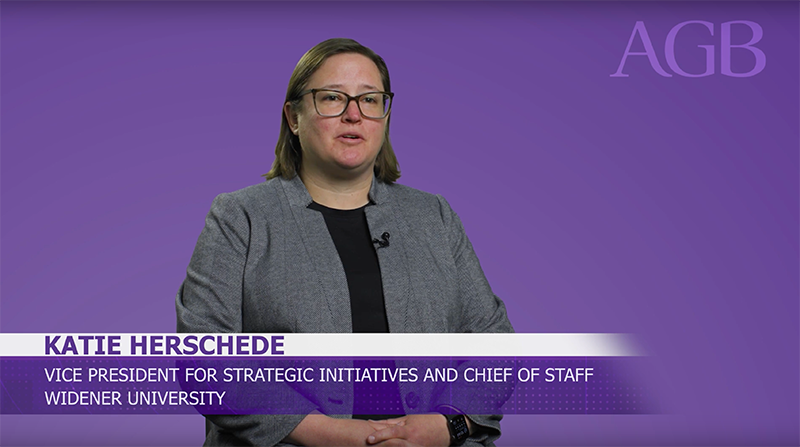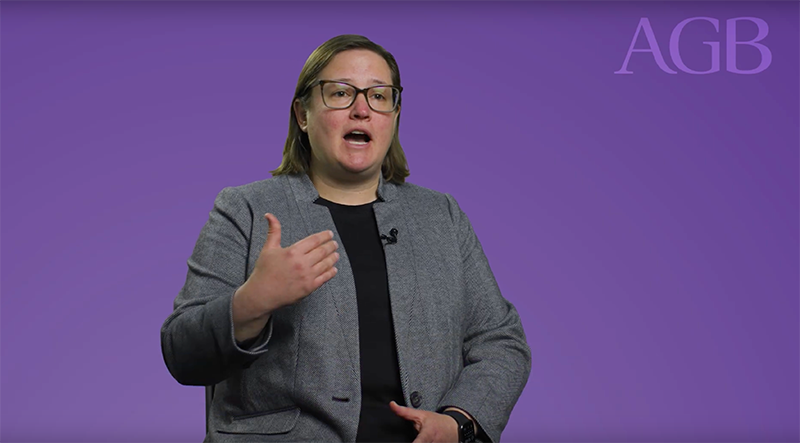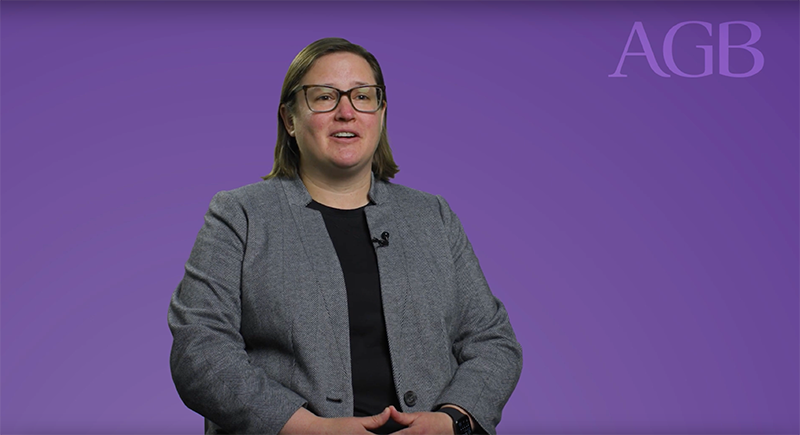
Opinions expressed in AGB blogs are those of the authors and not necessarily those of the institutions that employ them or of AGB.
Welcoming new trustees to a college, university, foundation, or system board is a pivotal moment—one that can shape the effectiveness and engagement of board members for years to come. A board orientation program should be more than a formality. Board orientation is an essential investment in the institution’s future, ensuring that board members are equipped, inspired, and ready to serve as effective stewards.
It is a mistake to assume that every new board member is familiar with the board’s fiduciary responsibilities or with the expectations of the board chair, fellow trustees, administrators, staff, faculty members, students, donors, alumni, and other key stakeholders. Even those individuals with prior board experience in other sectors have much to learn about the nuances of higher education governance. New trustees often arrive with impressive credentials and a passion for higher education, but even the most seasoned professionals from other spheres might be unfamiliar with the unique culture of higher education and their new fiduciary responsibilities to the institution, system, or foundation.
Orientation bridges this gap by clarifying expectations, demystifying board operations, and fostering a sense of belonging and purpose. A successful orientation program distinguishes governance from management, discusses balancing accountability with advocacy, and reduces ambiguity about the expectations for board service.
Notes board professional Katie Herschede, vice president for strategic initiatives and chief of staff at Widener University, “A successful board orientation is one that helps our trustees come up to speed as quickly as possible. These are brilliant people in business, government, education, and nonprofits, and we want to be able to get them as engaged with our boards as possible from day one.”
The Role of the Board Professional
Serving as the primary in-house governance expert, the board professional coordinates the orientation process to ensure it is both comprehensive and tailored to the institution’s unique context. These professionals’ responsibilities include recommending essential readings, preparing orientation materials, and facilitating introductions to key stakeholders across campus.
“An effective board orientation and education program helps pave the way to the effective performance of boards and individual members,” writes Charlene K. Reed in The Role of the Board Professional (AGB, 2017).1 Board professionals are adept at prioritizing information to prevent overload, focusing on what is most critical for new trustees to understand early in their tenure. They also provide ongoing support, answering questions, clarifying terminology, and serving as a resource for governance best practices. “In designing effective board orientation and ongoing development, board professionals must be thoroughly knowledgeable about their institutions and be able to respond to requests or know where to get the right answers,” adds Reed.2
“My role in board orientation is to really think about what are the most important things that those board members need to know. What are the relationships that they need to start forming?” says Herschede. “In a lot of ways, I’m behind the scenes orchestrating what that new orientation looks like, and it can look different depending on the trustees that are coming.”
Key Elements of a Successful Orientation
A successful board orientation shares information about the institution, clarifies roles and expectations, and fosters engagement through participatory sessions. This process includes:
- A Clear Scope and Well-Defined Expectations
All new trustees deserve comprehensive exposure to the institution’s mission, the board’s work, and their individual responsibilities. Clear communication of expectations—ideally through written job descriptions, statements of responsibilities, and board policies—sets the foundation for effective service. - A Balanced Agenda
The best orientation programs are highly participatory, offered in at least two sessions over 12 to 18 months. About half the time should focus on the institution—its mission, history, and challenges—and the other half on the board’s structure, culture, and responsibilities. This balance ensures that new trustees understand both the context in which they serve and the mechanics of their role. - Integration and Support
Orientation is an ongoing process, not a one-time event. New trustees should be introduced to board committees, provided with biographies of fellow trustees, and given opportunities to match their interests with institutional priorities. Regular check-ins and opportunities for feedback help ensure that trustees feel supported and valued. - Assessment and Improvement
Soliciting candid feedback from participants—both informally at the end of sessions and through formal surveys—enables continuous improvement of the orientation process.
In other words, a board orientation clearly explains the board’s fiduciary responsibilities, describes the mission and challenges facing the institution, provides opportunities for discussion and connection with key stakeholders, and includes ongoing support and assessment to ensure that board members are well-prepared and confident in their roles.
Engaging with New Board Members
A successful board orientation program is more than a series of lectures—it encourages discussion, reflection, and questions. Involving board leaders, faculty members, alumni, and students as storytellers and guides brings the institution’s history and culture to life. Allowing time for informal conversations and campus tours helps trustees develop personal connections and a deeper appreciation for the institution’s strengths and needs.
One option to engage new board members is to follow a “flipped” board orientation. This type of board orientation reverses the traditional approach by engaging new trustees in active learning before and during orientation sessions. Instead of relying solely on presentations, trustees receive key materials—such as readings on board responsibilities, institutional history, and strategic priorities—in advance, allowing them to review and reflect on these materials at their own pace. Orientation sessions then focus on discussion, questions, and real-world scenarios, with board leaders, staff, and other campus stakeholders facilitating interactive conversations.
When boards set clear expectations for new trustees to come to orientation sessions prepared and to participate constructively, a flipped orientation approach can foster deeper understanding, encourage meaningful engagement, and help new trustees quickly build confidence and connections within the board and institution.
“An old model of orientation might look like a full day on a campus where [board members] have eight hours of meetings back-to-back-to-back, and all of us know that that’s a really challenging way to learn,” says Herschede. “A flipped orientation takes content and breaks it into modules,” Herschede notes. “We have documents from AGB, podcasts, and articles that have been out there, and we’re able to package all of that into a module,” she adds, so that trustees review orientation materials on their own.
Conclusion
An effective board orientation program is more than a checklist. It is a strategic initiative that sets the tone for trusteeship.
By leveraging their deep institutional knowledge and expertise in board operations, board professionals help new trustees acclimate quickly and confidently, laying the groundwork for effective board service and ongoing development. By investing in comprehensive, engaging, and balanced orientation experiences, institutions empower their boards to govern with knowledge, confidence, and a deep sense of commitment. Ultimately, this investment pays dividends in the form of stronger, more effective governance and a brighter future for the institution, system, or foundation.
For more, visit AGB’s online orientation courses for public and independent institutions, foundations, and community college boards.
AGB used AGB Board BotTM in the development of this blog post to help summarize recommendations from our extensive library of content.
Notes
1. Charlene K. Reed, The Role of the Board Professional, (Washington, D.C.: AGB, 2017), 13.
2. Reed, The Role of the Board Professional, 16.
RELATED RESOURCES

Orientation
Board Member Orientation

Trusteeship Magazine Article
To Improve New Board Member Orientation, Flip It!




